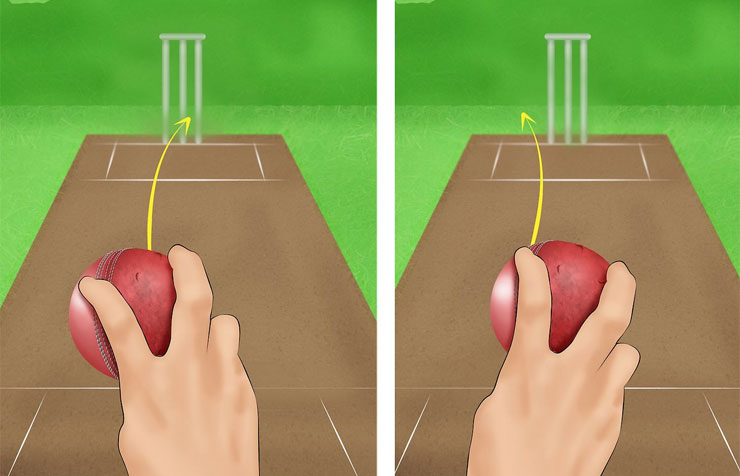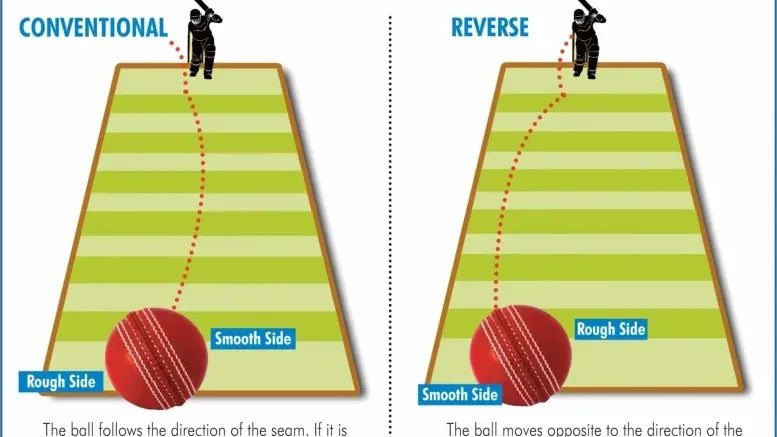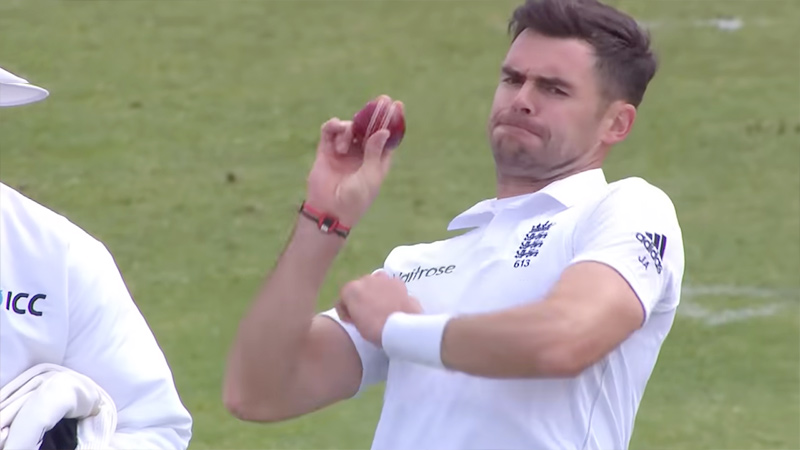Reverse swing bowling is one of the most fascinating aspects of cricket that can leave both batsmen and spectators in awe. Unlike conventional swing, which occurs with a shiny side of the ball facing the batsman, reverse swing happens when the ball has been worn down and the seam is positioned off-center. This technique is not just about skill but also about understanding the conditions and the right moment to use it. Mastering reverse swing can elevate a bowler's game and instill fear in the minds of opponents. Let's dive deeper into what exactly reverse swing is and why it’s crucial for bowlers.
Understanding the Physics Behind Reverse Swing

Diving into the mechanics, reverse swing is all about the physics of airflow and ball condition. Here’s how it works:
- Ball Condition: For reverse swing to occur, the ball must be old, typically at least 40 overs old. The rough side of the ball creates turbulence, while the shiny side streamlines airflow.
- Seam Positioning: The seam needs to be angled towards the batsman. When bowled with the seam aligned correctly, the ball will "reverse" towards the side with less friction, often resulting in surprising movement.
- Speed Factor: Reverse swing is most effective when the bowler bowls at speeds of 85 mph (137 km/h) or more. At these speeds, the airflow dynamics change significantly, allowing for that dramatic swing.
To visualize this better, let’s look at the airflow dynamics in a simple table:
| Ball Conditions | Airflow Characteristics | Expected Movement |
|---|---|---|
| New Ball | Streamlined | Conventional Swing |
| Worn Ball | Turbulent with a shiny side | Reverse Swing |
Understanding these principles can empower bowlers to leverage reverse swing effectively, adding a weapon to their bowling arsenal that can be game-changing on the pitch.
Key Techniques for Bowling Reverse Swing

Understanding the techniques behind reverse swing bowling is critical for any bowler who aspires to take their skills to the next level. Here are some key techniques to master this art:
- Ball Condition Management: To induce reverse swing, the ball must be in a specific condition. Generally, one side of the ball should be shiny while the other side remains rough. Bowlers should consistently polish one side with sweat or saliva to maintain its shine.
- Speed: Slow bowlers may find it difficult to achieve reverse swing. Ideally, bowlers should aim for speeds above 80 mph. The faster the ball travels, the more pronounced the effect of reverse swing becomes.
- Angle of Release: The angle at which the ball is released plays a crucial role in reverse swing. An upright seam position helps in achieving the desired swing. To create a greater deviation, bowlers should focus on delivering the ball with a higher arm action.
- Wrist Positioning: A straight wrist at the point of delivery helps maintain seam position, allowing the ball to swing effectively. An incorrect wrist position can lead to inconsistencies in swing.
- Bowling Style: Seam bowlers can benefit most from reverse swing. However, medium pacers can also achieve it under the right conditions. Adapting your bowling style to incorporate these techniques helps enhance effectiveness.
By practicing these techniques consistently, bowlers can become adept at reverse swing and turn matches in their favour.
Grip and Seam Positioning

The grip and seam positioning are fundamental aspects that can make or break your reverse swing bowling. Let's delve into how you can refine these skills:
| Aspect | Description |
|---|---|
| Grip: | The grip for reverse swing is crucial. Bowlers should hold the ball with their index and middle fingers placed close together. This allows better control over the seam angle. |
| Seam Position: | To make the ball “talk,” the seam should be angled at about 20 to 30 degrees towards the slip fielders. This helps in creating the conditions necessary for reverse swing. |
| Finger Pressure: | Apply more pressure with your index finger while keeping the grip firm but not too tight. This balance is key to achieving both control and swing. |
| Position of the Shiny Side: | Always ensure that the shiny side is facing the direction you want the ball to swing. This can greatly influence the swing pattern. |
Mastering grip and seam positioning takes practice, but with dedication, you'll be able to use these techniques effectively during matches, jarring your opponents and clinching those crucial wickets.
Bowling Action and Release Point
When it comes to mastering reverse swing bowling, your bowling action and release point are crucial elements that can significantly influence the effectiveness of your deliveries. Let's break down what you need to pay attention to.
First off, your bowling action should be smooth and repeatable. A consistent action helps in maintaining the same seam position throughout your deliveries, which is key for achieving that magical reverse swing. Here are some tips to consider:
- Arm Position: Keep your bowling arm high during the delivery stride. This elevates the seam angle and increases the chances of generating reverse swing.
- Body Alignment: Align your shoulders and hips with your target. A well-aligned body allows for better energy transfer, which contributes to a powerful delivery.
- Run-up Speed: Accelerate during your run-up, but maintain control. A brisk run-up creates momentum, essential for achieving reverse swing.
Next, let’s talk about the release point. The way you release the ball is another key factor in inducing reverse swing. Here’s what you should aim for:
- Seam Position: Ensure that the seam is tilted slightly towards the slip cordon. This helps in generating the right aerodynamic conditions for reverse swing.
- Finger Positioning: Your index and middle fingers should be positioned firmly along the seam when you release the ball. This can create more grip and control.
- Wrist Position: Keep your wrist firm and straight at the time of release to maintain seam integrity.
Practice makes perfect! Spend time refining your action and release point, and you'll be better positioned to unlock the secrets of reverse swing bowling.
Conditions Suitable for Reverse Swing
You might be wondering, “When can I expect to see reverse swing in my cricket match?” The truth is, several conditions can help you achieve that elusive reverse swing. Let’s explore these conditions one by one.
- Ball Condition: The state of the cricket ball is paramount. Reverse swing occurs with an older ball, typically around 40-50 overs old. The ball must have one shiny side and a rough side to create the right airflow.
- Pitch Conditions: Dry, abrasive pitches are ideal for inducing reverse swing. These surfaces cause the ball to deteriorate faster, enhancing the effectiveness of reverse swing.
- Atmospheric Conditions: Humidity and overcast weather can enhance reverse swing. Drier air contributes to the ball’s shine, which helps in maintaining one side of the ball for better swing.
- Bowler’s Speed: Fast bowlers, usually those who can generate speeds of 85 mph and above, are more likely to induce reverse swing. The higher speed creates more force on the ball, making it move in the air.
Understanding these environmental factors can significantly improve your chances of successfully mastering reverse swing. Make sure to observe the conditions and tailor your bowling strategy accordingly. Happy bowling!
Common Mistakes to Avoid
When it comes to mastering reverse swing bowling in cricket, avoiding common pitfalls can make all the difference. Even seasoned bowlers can find themselves slipping into habits that hinder their performance. Here’s a list of errors to steer clear of:
- Improper Seam Position: One of the biggest mistakes is neglecting the seam position. For reverse swing to work, the seam must be angled correctly; usually, it should point towards the slip cordon for the ball to move in the air.
- Ignoring Ball Maintenance: Bowlers often underestimate the importance of ball maintenance. Keep one side shiny and well-polished while allowing the other side to wear down. Neglecting this can prevent the ball from reversing.
- Too Much Speed: While pace is crucial, bowling too fast can negate the effects of reverse swing. It’s important to find a balance where your speed complements the swing.
- Consistent Yorkers: Some bowlers frequently resort to yorkers while attempting reverse swing, thinking it'll always work. However, varying your length can keep batsmen guessing, making it harder for them to settle in.
- Overlooking the Weather Conditions: Weather plays a significant role in reverse swing. Bowling in humid conditions will yield different results compared to a dry day, so adjust your strategy accordingly.
- Not Watching the Batsman: Many bowlers focus too much on themselves and forget to observe the batsman's stance. Knowing how they react can help you plan your bowling strategy more effectively.
By avoiding these common mistakes, you can significantly enhance your reverse swing bowling skills, setting yourself up for success on the field!
Practicing Reverse Swing Effectively
To truly master reverse swing bowling, effective practice strategies are essential. Here’s how to hone your skills and make reverse swing an integral part of your bowling arsenal:
- Fitness and Strength Training: Maintain physical fitness, especially in your core and arms, as stamina plays a crucial role in the ability to bowl fast and maintain swing.
- Use the Right Equipment: Utilize practice balls that mimic match conditions to get a feel for how the ball behaves in the air. This will help you understand the nuances of reverse swing.
- Shadow Bowling: Practice your action in front of a mirror to focus on grip and seam position. This can help in building muscle memory without the pressure of an actual match.
- Target Practice: Set up makeshift targets, like cones, and aim to hit them as you bowl. This will aid in controlling your direction while practicing swing.
- Video Analysis: Record your bowling sessions and review the footage. Analyzing your technique can reveal areas of improvement that you may not perceive live.
- Bowling with a Partner: Train with a partner who can offer feedback and simulate game scenarios. Getting real-time responses can help you adjust your technique on the fly.
Remember, consistent practice is key. The more time you invest in perfecting your reverse swing technique, the more successful you'll be on the field!
Mastering Reverse Swing Bowling in Cricket
Reverse swing bowling is an advanced technique in cricket that becomes effective under specific conditions, mainly with a worn cricket ball. This skill not only challenges batsmen but also serves as a potent weapon in the hands of skilled bowlers. To master reverse swing bowling, players must understand the mechanics, practice regularly, and maintain a keen eye on various influencing factors.
Understanding Reverse Swing
Reverse swing occurs when a bowler makes the ball deviate in the opposite direction to the conventional swing. It is generally effective when:
- The ball is older and has roughened on one side.
- The bowler delivers at higher speeds (typically over 85 mph).
- Conditions are dry and windy, aiding in the ball's aerodynamics.
Key Techniques for Mastery
To master reverse swing, bowlers should focus on the following techniques:
- Grip: Hold the seam upright with the shiny side facing the batsman and the rough side facing the slip cordon.
- Release: Deliver the ball with a high arm action, ensuring a smooth and fast release for increased speed.
- Angle: Angle your wrist and seam towards the slip, as this promotes the required deviation.
Practice Drills
Bowling drills to enhance reverse swing skills include:
| Drill | Description |
|---|---|
| Target Bowling | Aim for specific targets to practice accuracy while producing reverse swing. |
| Partner Drills | Bowling to a partner who provides feedback on swing direction and effectiveness. |
In conclusion, mastering reverse swing bowling requires dedication, practice, and understanding of both the mechanics of the delivery and the conditions that favor it. With time and effort, bowlers can add this formidable skill to their repertoire, enhancing their effectiveness in the game.










